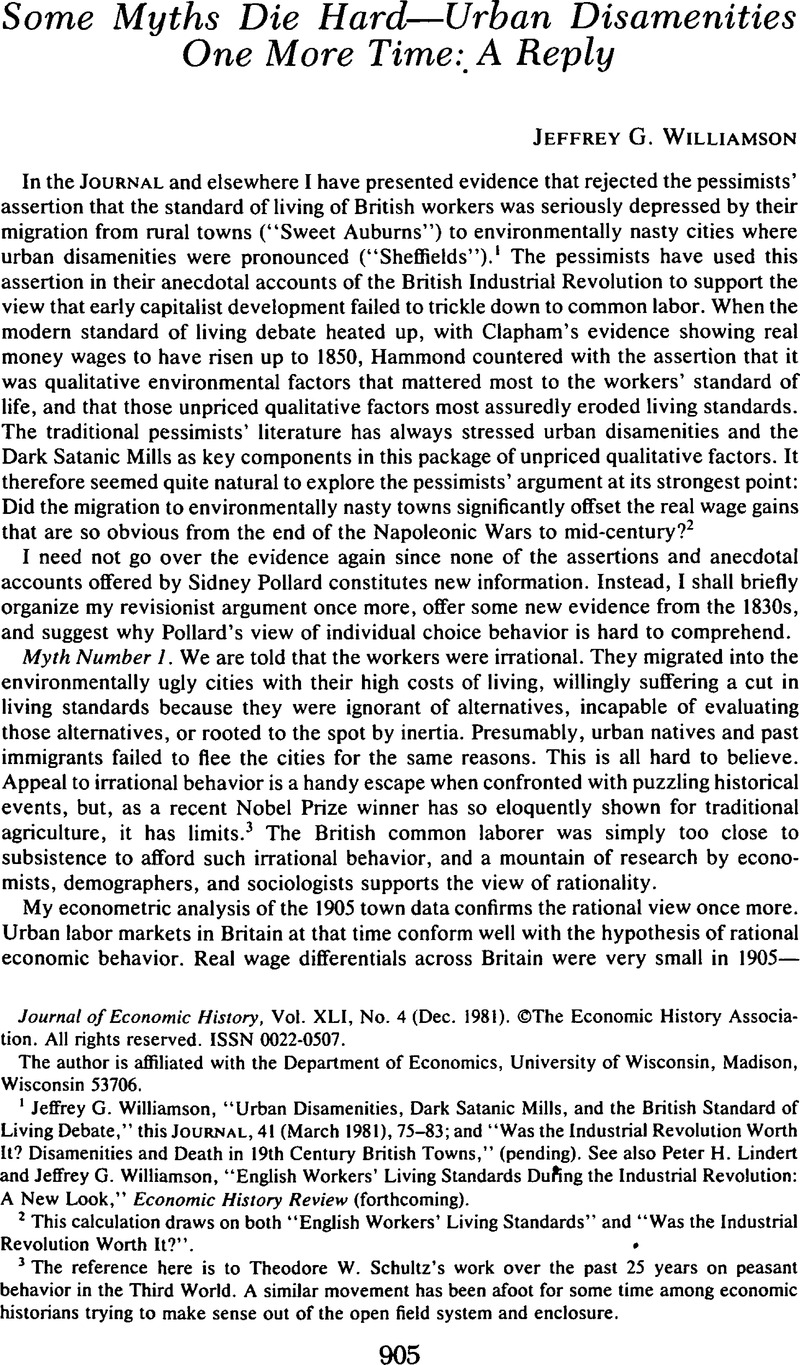Article contents
Some Myths Die Hard—Urban Disamenities One More Time: A Reply
Published online by Cambridge University Press: 03 March 2009
Abstract

- Type
- Notes and Discussion
- Information
- Copyright
- Copyright © The Economic History Association 1981
References
1 Williamson, Jeffrey G., “Urban Disamenities, Dark Satanic Mills, and the British Standard of Living Debate,” this Journal, 41 (03 1981), 75–83; and “Was the Industrial Revolution Worth It? Disamenities and Death in 19th Century British Towns,” (pending).Google Scholar See also Lindert, Peter H. and Williamson, Jeffrey G., “English Workers' Living Standards During the Industrial Revolution: A New Look,” Economic History Review (forthcoming).Google Scholar
2 This calculation draws on both “English Workers' Living Standards” and “Was the Industrial Revolution Worth It?”.Google Scholar
3 The reference here is to Theodore W. Schultz's work over the past 25 years on peasant behavior in the Third World. A similar movement has been a foot for some time among economic historians trying to make sense out of the open field system and enclosure.Google Scholar
4 See “Was the Industrial Revolution Worth It?” where a sample of 66 urban parishes from the 1834 Poor Law Report are subjected to the same econometric analysis as that applied to the 1905 towns reported in “ Urban Disamenities.”Google Scholar
5 The following paragraph is taken from Lindert and Williamson, “English Workers' Living Standards,” sec. 9.Google Scholar
6 “Urban Disamenities,” p. 81, reports the agricultural employment share changes and the urbanization rates used in this calculation.Google Scholar
7 Preston, Samuel H., “Causes and Consequences of Mortality Declines in Less Developed Countries During the Twentieth Century,” in Easterlin, Richard A., ed., Population and Economic Change in Less Developed Countries, (Chicago, 1980);Google ScholarPreston, Samuel H., Mortality Patterns in National Populations, with Special Reference to Cause of Death (New York, 1976), chap. 4.Google Scholar
8 For an analysis of this and other aspects of Third World urbanization, see Kelley, Allen C. and Williamson, Jeffrey G., Modelling Urbanization and Economic Growth (Laxenburg, Austria, 1980).Google Scholar
- 6
- Cited by


